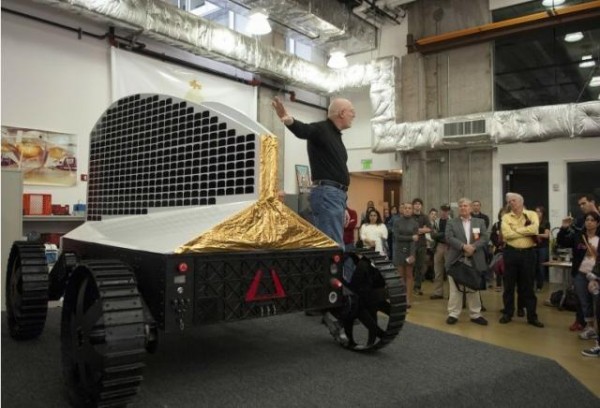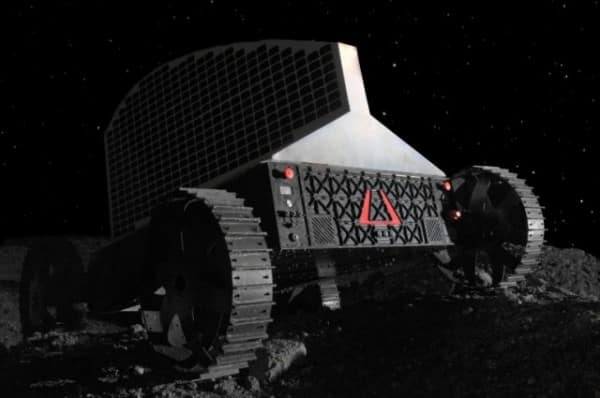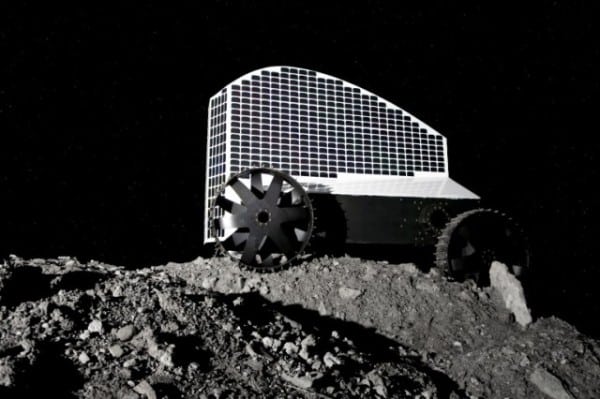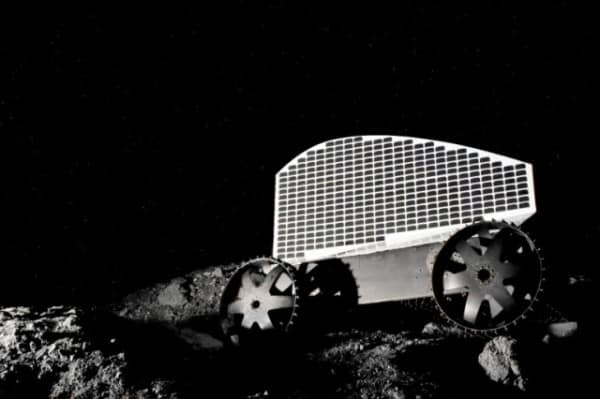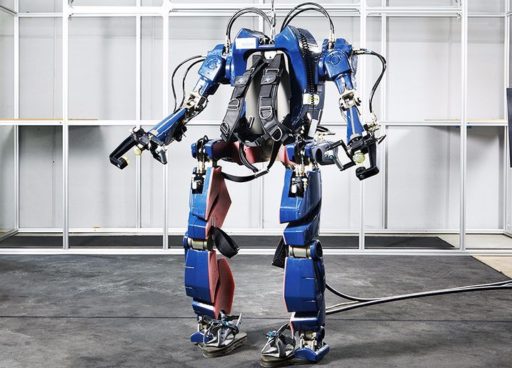Astrobotic Technology Inc. has built Polaris, a full-size prototype of a solar-powered robot, that will search for potentially rich deposits of water ice at the moon’s poles. The solar-powered “water-prospecting robot” will be exploring moon’s northern poles where the Sun seldom shows up.
U.S. and Indian orbital probes have found clues that there is a high probability of having solid water (ice) deposits at the lunar poles. The permanently shadowed regions of moon’s poles show strong signs of holding ice deposits. This ice deposits could be a source of water, fuel and oxygen for future colonies. And to explore the areas, Astrobotic Technology has built Polaris.
One of the biggest challenge of Polaris is to catch enough light to keep itself running in a region where the Sun hardly shows up. The rover has to generate 250 watts of power to keep itself alive. To make sure that the rover gets enough power to go on, it is fitted with three very large vertical solar arrays. The dimensions of the robot are as follows.
Height : 5 and a half feet (1.67 m)
Width : 7 feet (2.13 m)
Length : approximate 8 feet (2.43 m)
Weight : 150 pounds (68.03 kg)
Diameter Of Wheels : 2 feet (60.96 cm)
Polaris can carry a bit more than 150 pounds (70 kilograms) of weight. It will travel over the rough terrain of the moon at about 1 foot (30.48 cm) per second.
Withing this year, Astrobotic will test and improve Polaris’ vision, navigation and planning software. SpaceX Falcon 9 will take Polaris to the moon. Once Polaris arrives on the Moon, it’ll spend 10 days, travel minimum 3 miles (4.82 km) and drill 10-100 holes in the lunar surface. If Polaris manages to survive the 14-day lunar night (also can be called Fortnight), the mission might be extended for few more days.
Source: Carnegie Mellon University
Thanks To: Gizmag
[ttjad keyword=”solar-device”]

